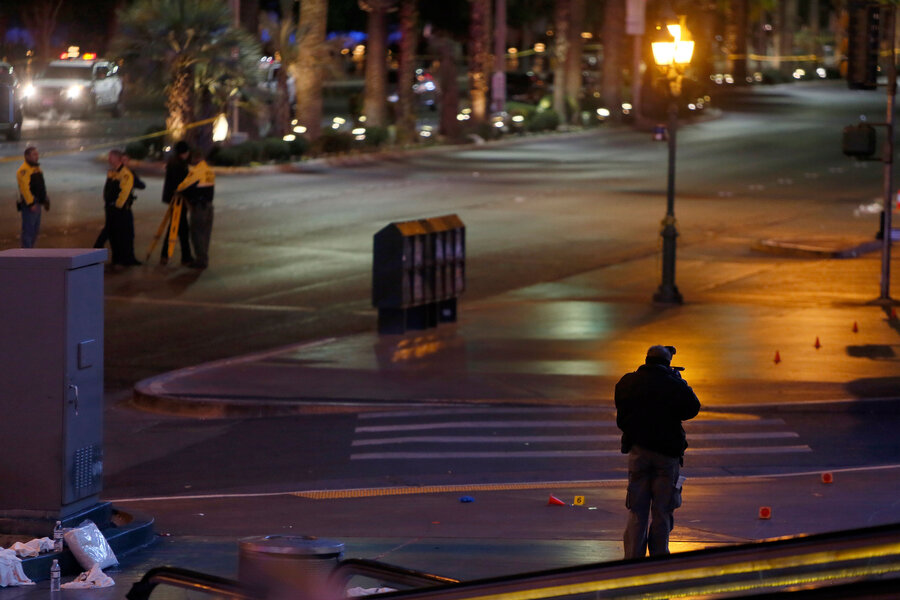Las Vegas 'intentional' car crash: What was the driver thinking?
Loading...
Another intentional car crash, this time in Las Vegas, has left one dead and 30 injured, and officials debate whether to treat it as an attack or another sign that America’s care for the mentally ill is lacking.
A woman swerved multiple times onto a busy sidewalk on the famous Las Vegas Strip on Sunday, leaving police confident she crashed intentionally but unsure why.
"This is a huge tragedy that has happened on our Strip," Las Vegas Metropolitan Police Department Lt. Peter Boffelli told the Associated Press.
The woman in her 20s is in the county jail with charges pending, and police say they are interviewing her and taking a blood sample. The blood sample is partly a way to determine whether the driver was intoxicated, which would impact a trial.
Joel Ortega of Redlands, Calif., who saw the police investigating the Las Vegas crash, said it reminded him of the disruption in his neighborhood after the Dec. 2 attack in San Bernardino.
Intentional crashes also have a precedent as a means of attack. In October 2014 a Palestinian man in East Jerusalem drove his car into a crowd of pedestrians and a light rail, The Christian Science Monitor reported. Coming amid months of unrest in Jerusalem, it was viewed as a terrorist attack.
But even amid terrorism fears on US soil, Capt. Brett Zimmerman has ruled it out for the Las Vegas case, as police review the videos from the casino’s surveillance cameras.
"We know this was not an act of terrorism," he told the Associated Press. "We will comb through that footage to get a detailed idea of what occurred."
This is not the first intentional crash to alarm and puzzle law enforcement this fall. Adacia Chambers, also in her 20s, has been charged with killing four people when she drove into a crowd at the Oklahoma State homecoming parade on Oct. 24. Her defense attorney insists she is mentally ill, although on Dec. 10 the judge in her case ruled her competent to stand trial.
Even if the driver in the Las Vegas case turns out to be somehow inhibited in her judgment, she could face charges that she knew driving repeatedly into a crowd would hurt someone. In Nov. 2015, a jury found Rashad Owens guilty of murder for killing four while driving drunk into a crowd at the March 2014 SXSW music festival, the Austin American Statesman reported.
In Las Vegas, the local trauma center has treated 15 patients from the Las Vegas crash, nine of whom remain in serious condition, Danita Cohen, spokeswoman for University Medical Center said. An additional 13 went to Sunrise Hospital and Medical Center, but none were seriously injured, spokeswoman Stacy Acquista said.
This report contains material from the Associated Press.








